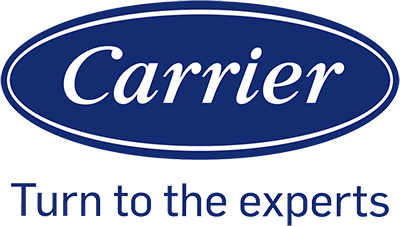Dust, pollen, and other particles move through the air in our homes every day. When air ducts collect these irritants, they spread through the system and lower indoor air quality. By keeping air ducts clean, we lower irritant levels and make the air easier to breathe.

We often overlook air ducts because they stay out of sight, but they play a major role in how healthy our indoor spaces feel. Regular maintenance helps control the buildup of dust, mold, and other debris that can trigger allergies or discomfort. Clean ducts also keep airflow steady and systems running more efficiently.
As we look closer at how duct care works, we can see not only how it reduces irritants but also how it supports comfort and system performance. From simple maintenance habits to choosing the right professional service, small steps can make a noticeable difference in the air we breathe every day.
How Air Duct Maintenance Reduces Irritant Levels

Clean air ducts help us control the spread of airborne irritants that affect respiratory health. Regular maintenance limits dust, allergens, and mold growth, which improves indoor air quality and supports a healthier indoor environment.
Role of Air Ducts in Circulating Irritants
Air ducts move heated or cooled air through our homes and workplaces. As they circulate air, they also carry dust particles, pollen, pet dander, and other contaminants. Without cleaning, these irritants collect inside the ducts and spread every time the system runs.
When dust and debris build up, airflow becomes less efficient. This can push pollutants into every room, making it harder to keep a clean environment. Families with pets or people who smoke often see faster buildup of irritants.
Routine duct cleaning removes these trapped particles before they spread. By reducing the amount of airborne irritants, we create a healthier space and protect the performance of the ventilation system.
Impact of Dust and Allergens on Indoor Air Quality
Dust and allergens directly affect indoor air quality. Dust mites, pollen, and pet dander are common triggers for allergies and asthma. When ducts hold these particles, they continue to circulate and increase the risk of respiratory issues.
We often notice allergy symptoms like sneezing, watery eyes, or coughing when irritant levels rise. In some cases, fine dust particles can also worsen breathing problems for people with asthma or other respiratory conditions.
Cleaning air ducts lowers the amount of allergens in the system. This step supports better respiratory health and helps us maintain a cleaner living space. It also reduces how often dust settles on furniture and surfaces.
Common Allergens Found in Air Ducts:
- Dust mites
- Pet dander
- Pollen
- Mold spores
Prevention of Mold and Mildew Growth
Moisture inside air ducts creates the right conditions for mold and mildew. Leaks, condensation, or high humidity can allow mold spores to grow and spread through the ventilation system. Once airborne, these spores lower indoor air quality and may cause respiratory irritation.
Mold can produce unpleasant odors and trigger coughing, throat irritation, and other health concerns. Mildew growth also damages duct materials and can shorten the life of the system.
By keeping ducts dry and clean, we lower the chance of mold growth. Regular inspections, cleaning, and moisture control prevent spores from spreading and help us maintain a safe, healthy indoor environment.
Benefits of Regular Air Duct Maintenance
When we keep our air ducts clean, we reduce health risks linked to poor air quality, improve how well our heating and cooling systems work, and remove odors that make indoor spaces less comfortable. These changes create a healthier and more efficient home environment.
Reduction of Allergy Symptoms and Respiratory Issues
Dust, pollen, and pet dander often collect inside air ducts. When the HVAC system runs, these irritants spread through the air and can trigger allergy symptoms such as sneezing, coughing, and watery eyes.
By scheduling regular air duct cleaning, we limit the buildup of these particles. Cleaner air ducts mean fewer allergens circulating in our living spaces, which supports a healthier indoor environment.
This is especially important for people with asthma or other respiratory conditions. Cleaner air ducts help reduce flare-ups and make it easier to breathe. Families with children or older adults often notice fewer complaints about congestion and irritation once ducts are maintained.
We also lower the risk of mold growth inside ducts. Mold spores can worsen respiratory issues, so reducing moisture and buildup in the system directly improves air quality.
Improvement in HVAC System Efficiency and Airflow
When dust and debris block airflow, the HVAC system has to work harder to heat or cool the home. This leads to reduced efficiency, uneven temperatures, and higher energy bills.
Clean air ducts allow air to move freely through the system. Better airflow helps each room maintain a consistent temperature, making the home more comfortable.
Regular maintenance also protects the system from strain. A clogged system wears out faster, while a clean system runs smoothly and lasts longer.
Key benefits include:
- Improved airflow through vents
- Lower energy use due to less strain on the system
- Fewer repairs because parts are not overworked
Odor Elimination and Enhanced Comfort
Unusual odors often come from dust, mold, or even pests inside the ducts. When air passes through, these smells spread into every room and create an unpleasant environment.
Air duct cleaning removes the source of these odors. With cleaner air ducts, the home smells fresher, and we avoid masking the problem with sprays or candles.
This step also improves comfort. A home with clean, odor-free air feels more welcoming and supports a healthier indoor environment.
We notice the difference most in spaces with pets, smokers, or high humidity. Regular duct maintenance helps prevent lingering smells from becoming a constant issue.
Effective Air Duct Maintenance Practices
We reduce irritant levels in the air by keeping ducts clean, controlling moisture, and preventing leaks. These steps limit dust accumulation, improve airflow, and lower the spread of allergens.
Routine Inspection and Vacuuming
We should inspect ducts at least once a year to check for visible dust buildup, debris, or blockages. Regular inspection helps us identify early signs of problems before they affect air quality.
Vacuuming is one of the most effective ways to remove dust accumulation. Using a high-efficiency vacuum with a HEPA filter prevents particles from being released back into the air. We also make sure to reach vents, registers, and accessible duct openings during cleaning.
Professional duct cleaning may be needed if we notice heavy buildup, pest droppings, or mold growth. In most homes, light vacuuming every few months and a deeper cleaning every few years is enough to maintain cleaner ducts.
Filter Replacement and Indoor Humidity Control
Air filters are the first line of defense against dust and allergens. We replace filters on schedule, usually every 1 to 3 months, depending on the filter type and household conditions. A clogged filter reduces airflow and allows more particles to circulate indoors.
We also pay attention to indoor humidity. High humidity encourages mold growth inside ducts, while very low humidity can increase airborne dust. Keeping indoor humidity between 30% and 50% helps reduce irritants and supports filter efficiency.
A simple way to track conditions is by using a digital hygrometer. If humidity runs high, we use a dehumidifier. If it drops too low, a humidifier can help. This balance keeps ducts cleaner and improves indoor comfort.
Duct Sealing and Sanitization
Leaky ducts pull in dust, dirt, and insulation fibers from attics or crawl spaces. We seal gaps and joints with mastic or metal tape to prevent outside particles from entering the system. Proper sealing also improves energy efficiency by keeping conditioned air inside.
Sanitization is sometimes needed when ducts show signs of microbial growth. We use safe, approved cleaners to disinfect surfaces without leaving strong chemical residues. This step is especially important in damp climates or after water damage.
By sealing and sanitizing ducts when necessary, we reduce the spread of contaminants and keep the system working more effectively for longer periods.
Choosing a Professional Air Duct Cleaning Service
We can keep our HVAC system efficient and indoor air cleaner by knowing when to call experts, what the cleaning process involves, and how it affects long-term energy costs. Careful choices help us save money and avoid unnecessary problems.
When to Seek Professional Help
We should consider a professional air duct cleaning service when we notice visible dust buildup around vents, musty odors, or uneven airflow. These signs often mean dirt, debris, or even mold may be inside the ductwork.
If we or family members experience more allergy symptoms indoors, that can also be a signal. Dust, pollen, and pet dander can collect in ducts and circulate through the home. Regular filter changes help, but they do not remove buildup inside the ducts.
It is also smart to schedule cleaning after remodeling or construction. Fine dust from drywall or insulation can spread through the HVAC system and lower air quality. In these cases, a professional service with proper equipment is the best option.
What to Expect from a Duct Cleaning Service
A professional air duct cleaning service usually begins with an inspection. Technicians may use cameras to check for dust, debris, or blockages in the ductwork. This step helps us understand the condition of our system before cleaning starts.
The cleaning process often includes:
- High-powered vacuums to remove dust and dirt
- Rotary brushes or air whips to loosen debris
- Sanitizing treatments if mold or bacteria are found
We should expect the service to take several hours, depending on the size of our home and the complexity of the HVAC system. Reputable companies explain their process clearly, show us what they remove, and avoid upselling unnecessary services.
Long-Term Energy Savings and Cost Benefits
Clean ducts can improve HVAC system efficiency by reducing the strain on fans and motors. When airflow is not blocked by dust or debris, the system runs more smoothly and uses less energy. This can lower monthly energy costs.
While the cleaning itself is an expense, the long-term benefits can outweigh the cost. Lower energy bills, fewer repairs, and a longer system lifespan all add value.
We may not see immediate savings, but over time, improved efficiency and reduced breakdowns can make professional air duct cleaning a practical investment. Keeping ducts clear helps us maintain both cleaner air and better energy efficiency in our homes.




